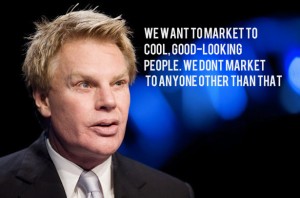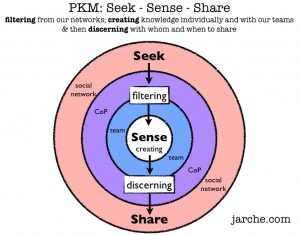There is common factor in what both United Nations and social enterprise pursue as their final goal- “making this world a better place”.
The United Nations consists of 193 countries (in 2011 July) and it is basically funded by the member nations. In other words, all the actions the United Nations is to take must happen under all the counties’ agreement, which restricts the actions taken by the United Nations in terms of time, issues to solve, and so on. It is hard for the United Nations to take part in small social improvement movements that focus on specific area, since it is funded by the member nations, and would rather focus on larger issues happening in today’s world. On the other hand, social enterprise can set a target on such smaller social movements. Moreover, the activities are less restricted since the funder is company itself, and it can do whatever the company believes it is beneficial for the company and the society.
In my personal opinion, Social enterprise exists in order to cover the work that cannot be completed by the United Nations. This does not mean either organization is better or not. The reason why one does not eliminate another is because both exist to pursue the same goal, but resolving the issues by setting different targets and taking different approaches.
Monthly Archives: November 2014
The difficulty controlling the exclusive image
I agree with Jessica Chen’s opinion that Abercrombie & Fitch should reconsider its business model. For the company, “Only cool people can wear Abercrombie & Fitch” concept has been the way to differentiate its product among the competitors.
In addition, an effort made by the company to establish a strong brand image and to protect it are both important factors for the company to survive and win the severe competition among apparel giants. Even so, belief held by Mike Jeffries, CEO of Abercrombie & Fitch for his brand may have been too extreme and offensive toward individual’s religion, gender, and appearance. In fact, his behavior has affected his own business in a negative manner. The graph below indicates the declining consumer perception for Abercrombie & Fitch in comparison with its competitors like H&M and American Eagle.
Leaders in business and political scene are always exposed to public views. This is the same for any extreme thought made by such leaders. Depending on how views are taken by the public, such leader can easily gain or turn away supporters. Such “charisma” model may be a fit for selective industry, but not for clothing industry where public have so much buying power with so many substitutes. If the customers dislike any part of that company, they can just start buying identical products from different stores, and if this trend continues, the company may end up losing its customers bringing fatal results to its financial performance. The most important thing for Abercrombie & Fitch in order to sustain business in this industry is to improve its social image immediately by effectively applying governance to CEO’s risky behaviors.
The Lesson from the Fukushima disaster
When I was reading the Harvard Business review, one article written by Ranjay Gulati, Charles Casto, Charlotte Krontiris, about the Fukushima disaster, which actually occurred at my home country Japan, caught my eyes. I have seen many media programs and read articles about this natural disaster and its impact to the nuclear plants in Fukushima, but this one was especially interesting because it focused on individual’s outstanding leadership skills who worked at the ‘daini’ (which means 2nd in Japanese) plant along with his team members in an effort to cool down the plant and to prevent further disaster. His leadership was based on 2 key skills.
• Sensemaking process– adaptive behavior in which understanding and experience shape each other (from the article)
• Establishing Shared Value with his team.
If I put myself in a similar situation where I have to work under extreme condition such as the Fukushima disaster, I would most likely evacuate immediately in order to protect myself. This was not the same for the team at the ‘daini’ plant. Team members trusted their leader, held tight and stayed there until the mission was accomplished.
This took place in a nuclear plant but I also think this is applicable in the business world. If the company has leaders who can approach and resolve issues with sensemaking process and build a team which can create shared values, such company is unlikely to fail easily in a tough business environment. It is interesting to note that lessons learned from a non-business incident have much relevance to what takes place in the business world.
Would Nintendo’s new attempt success?
Luna Zhang’s Blog introducing Nintendo’s new quality of life products got my attention since it contradicted with my expectation of a product introduced by Nintendo.
I think the market which Nintendo has chosen has some potential as people in any generation do desire to have a better quality of life. People will never stop seeking for better and easier way to improve their quality of life.
However, the question is will customers understand and accept such proposition made by Nintendo who is a new comer in the market? In addition, no one can estimate if long time clients and investors will allow such a new investment made in a field which absolutely has no relevance to its known video games.
Moreover, there are many people who carry smartphones nowadays. One can add various functions to the phone just by downloading applications. This is becoming the standard among consumers as it is more convenient and cost efficient. How will Nintendo compete with such smartphones?
It is hard to evaluate the value proposition and competitiveness of this new device since details are yet to be announced, but Nintendo should carefully assess the market and set its value proposition in accordance to such market trends in order to survive the intense competition.
Nintendo should appeal its history and current position as the leader in the game industry. By doing so, they can maintain the loyal customers while attracting new ones which will eventually result in increased revenue and profit for Nintendo.
Starbucks to be a third place or a first place?
According to the Forbes magazine, Starbucks is going through a transition in its customer segment and value proposition. Starbucks used to be known as the “third place” offering surrounding that allows individual to be separated from their usual atmosphere like home and work place and enjoy affordable luxury. However this has been changing recently as Starbucks have been expanding its client base to different type of client segments and by satisfying some factors mentioned in the article that promote the transition. It is becoming the “first place” from its current “third place” for many customers.
Article mentions that company has been running successfully so far, however by pushing this agenda too drastically, Starbucks’ current value proposition may no longer hold true for some clients and hence may push away its loyal customers.
Retail giant like Starbucks must constantly evolve in accordance to client needs and simultaneously build a strong business model to increase revenue, profit and share price. For this, the company may need to take a “creative” and “realistic” approach by offering conflicting value propositions at the same time for clients with different needs. Once observation is made, analysis is done and conclusion is drawn, company can focus its attention, strategy and resource at that time to evolve again.
“One for one” business model
I was interested in this article talking about successful entrepreneurs and Blake Mycoskie founder of TOMS’s shoes was mentioned in the article as one of them.
I was aware of TOMS slogan called “one for one,” which gives out shoes to a child in need for every purchase made, but never paid special attention to it until I learned about the Social Entrepreneur in one of my classes. I became interested in this new business field which directly and skillfully appeals to human conscience.
Let’s say there are 2 identical products where one is just a normal product and the other allows you to take part in a social movement that provides shoes for kids with basic needs. I believe majority would prefer the second choice because one can be a part of social movement by just purchasing a pair of favorite shoes. TOMS’s social media is carefully designed to make one want to be a part of the team. Such awareness building and sense of involvement and attachment will eventually end up raising customers’ trust and loyalty toward the company. Furthermore, the unique and appealing “one for one” business model can differentiate its products from others in order to attract more customers.
The lesson from this
It is the effort needed to attach clients with an unique concept in order to stick the client to its brand. TOMS, a social entrepreneur who induces clients to purchase favorite shoes and help those with needs at the same time is a great example of such efforts.






